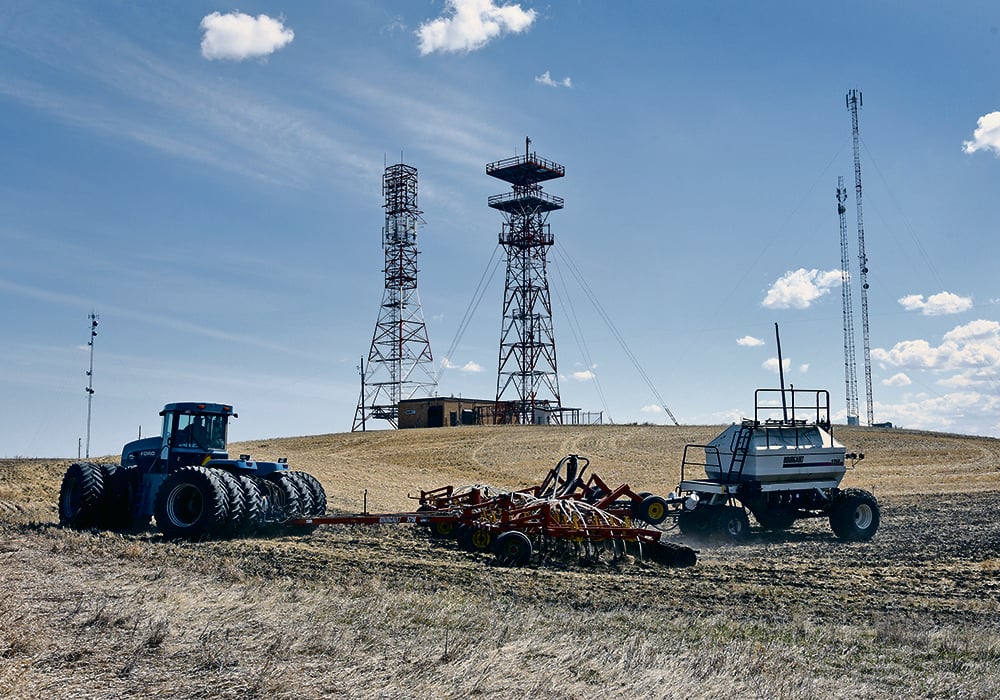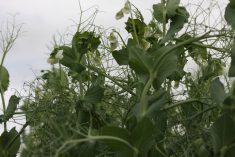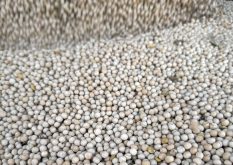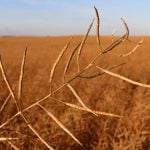Crop rotation, seeding depth and rate and root characteristics all play a role for pulse crops going into a dry year
There’s a farmer adage that goes, “we’ve never lost a crop in the middle of winter.” In other words, there’s no point speculating on what the growing season is going to be like before the first rainfall.
That said, it’s looking more and more likely that 2024 will be another dry year. For many pulse producers, the question is how to manage their crops on what little moisture they have.
Related stories:
“If we don’t get any snow cover by spring, that could be a real major problem,” says Dale Risula, a specialist with Saskatchewan’s agriculture ministry.
“Having gone through a number of dry years now, there’s very little moisture reserves in the soil.”
The advice of specialists throughout the Prairies — much of which applies to other crops as well — is for growers to stick to beneficial management practices (BMPs) when it comes to either existing or future moisture.
“It’s just being a smart farmer and giving your pea crops the most advantage you possibly can right from the get-go,” said Robyne Davidson, pulse specialist with Lakeland College in Vermilion, Alta.
Risula recommends minimizing tillage to save as much moisture as possible. He also suggests using the root depth of what was planted last year as a guide to where to find moisture.
“Crop rotations will play a part because different crops have different rooting depths over the growing season,” he said.
“If you want to consider growing a crop that’s had a deep-rooted plant on it, there might be more moisture in the top part of the profile than there would be if you seed in an area where there was a medium- or short-rooted plant from the previous season.”
A good idea may be to store higher-value seed and start off seeding lower-value seed, Risula said.
“The longer you wait, the more moisture you’re likely going to lose from evaporation from the soil surface. Waiting any longer may make the situation worse, but you probably want to seed something. If you risk seeding the high-value seed, that’s pretty high risk.”
Of course, any decision to seed should be informed by a host of factors including soil type, soil compaction, available equipment and seeding depth.
“It’s really important to seed to a level where you get even germination and even emergence of the crop throughout the field so that you have a stand to survive,” Risula said.
One thing producers shouldn’t do is base their seeding depth on a hunt for moisture. When seeding in dry soil conditions, the commonly recommended seed depth standards still apply.
“In dry soil conditions, growers may be tempted to seed deep enough to reach moisture,” he said.
“This is not necessary from April to mid-May. There is still time to wait for a rain In April and through to mid-May to provide the moisture needed for germination and emergence. There is nothing to be gained from seeding deep in this situation.”
Deep-seeding to reach moisture can also mean the risk of planting into cooler soil.
“Cool conditions, combined with the extended distance seedlings must grow to reach the soil surface, will mean higher seed and seedling mortality. Higher seeding rates will be needed to compensate.”
Risula advised keeping seeding rates in the crop’s recommended range during times when rainfall is normally expected.
Alberta Pulse Growers, for example, recommends seeding field peas for 75 to 90 plants per sq. metre and seven to eight viable plants per sq. foot.
“Cutting back the seeding rate during a dry planting season could reduce yield if normal to near-normal precipitation occurs during the growing season,” Risula said.
However, there are cases in which cutting these rates may be appropriate.
“In non-irrigated dryland areas, particularly on light-textured soils that are prone to late summer drought, seeding rates may need to be reduced to help provide each plants with as much soil moisture as possible.”
Several years of low-moisture conditions can lead to unexpected problems such as herbicide residues in the soil that haven’t dissipated.
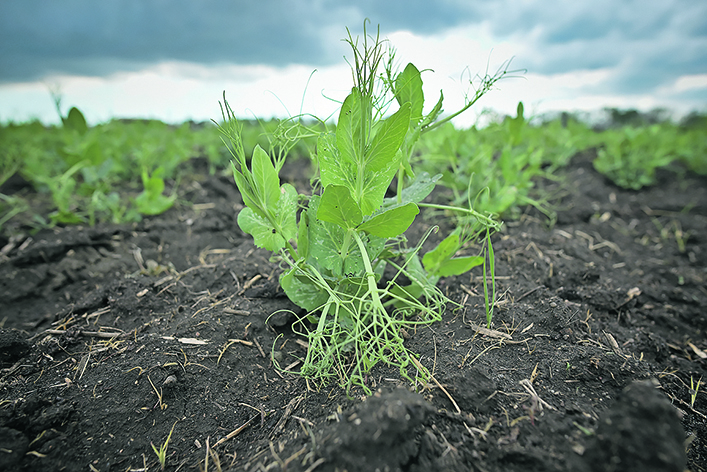
This means either not seeding into land where there may be herbicide residue or “circumventing” your crop rotation practices.
“They may have to grow peas on peas that were there last year because of the herbicide used,” Risula said.
“If they grow wheat on there, there can be a problem if that residue is still there.”
All of this advice requires producers to have extensive knowledge of their fields. If they don’t have it, it’s time to start gaining it.
“There’s a lot of potential risks that come up because of dry conditions, so farmers are going to have to be really conscious of (fields’) past history: chemicals applied, products applied, crops grown and type of soil compaction,” Risula said.
Tools are available to help producers assess their herbicide residue risk. The Government of Saskatchewan released a herbicide carryover risk level map of the province for June 14-Sept 26, 2022. Producers may want to watch for an updated map this year, Risula said.
Dennis Lange, pulse and soybean specialist with Manitoba Agriculture, also urges pulse growers to stick with good agronomic practices when dealing with dry conditions.
“I think what you need to really do is sit down as a producer, look at your rotations, look to see if the pulse you’re growing is going to have a good fit given average moisture conditions and then, being that we’re getting closer to spring, you may have to tweak your planting depth a little bit to go down a little deeper,” he said.


